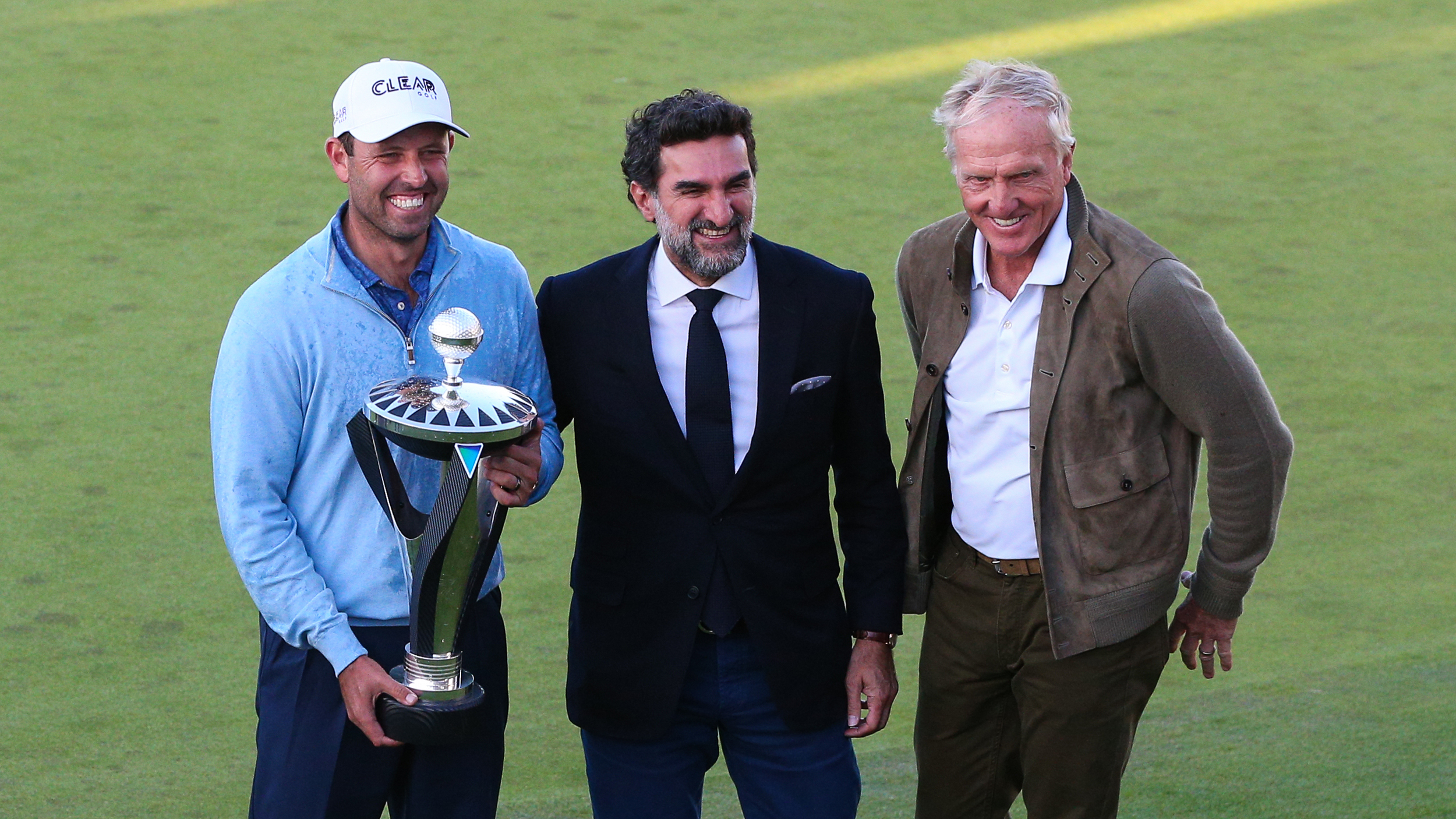5 Things We Learned From The LIV Golf Invitational London
After one of the most highly anticipated weekends of golf in recent memory, here are our takeaways from the first LIV Golf Invitational


After months of posturing and speculation, the LIV Golf Series is here. Finally, the talking could stop and the golf could begin on the Greg Norman-led mega-money breakaway circuit that visited the Centurion Club in Hemel Hempstead for its inaugural edition.
As expected, there was no shortage of controversy in the build-up, with some of the game’s biggest names coming under fire for their participation in what many believe is nothing more than a calculated effort to "sportswash" Saudi Arabia’s human rights record.
“If Saudi Arabia wanted to use the game of golf as a way for them to get to where they want to be and they have the resources to accelerate that experience, I think we are proud to help them on that journey”, said LIV Golf player Graeme McDowell, when questioned on the highly controversial issue in a pre-tournament press conference.
Politics aside, Norman, the man tasked with getting the circuit off the ground, promised a “revolutionary format” that would appeal to fans, players and make the sport a better TV product.
Replacing the 72-hole strokeplay model is a three-round shotgun-start event offering up individual and team prizes. There was even a draft party on Tuesday, where captains took turns completing their rosters in a manner similar to the NFL.
Whether this is the start of a seismic shift or merely a flash in the pan remains to be seen, but the Saudi-backed series is certainly causing a stir, so with the first tournament in the books, here are five things we learned from the inaugural LIV Golf Invitational.
1. Free tickets a worthwhile concession
One of the big questions was how well attended the London event would be. After all, when ticket prices were first released, many fans were left aghast at the outlay being demanded for the unknown quantity that was still without a proper headliner.
Subscribe to the Golf Monthly newsletter to stay up to date with all the latest tour news, equipment news, reviews, head-to-heads and buyer’s guides from our team of experienced experts.
However, with sales perhaps lacking, a last-gasp attempt was made to get spectators through the gates through various promo codes offering free entry - and it seemed to do the trick. When Dustin Johnson got underway on day one, it was in front of a fairly sizeable gallery. This policy clearly won't continue, even with the might of Saudi Arabia’s Public Investment Fund backing the series, but it was a good start from an on-site viewership perspective across the three days.
A new era begins 🎬Stream now 👉 https://t.co/9hX4ytVZZa#LIVGolf | @DJohnsonPGA pic.twitter.com/xt41Vo4uC2June 9, 2022
2. No TV deal, no problem
With no TV deal in place, LIV Golf was forced to stream the action on YouTube and through its website. Again, this likely worked in its favour. Around 30,000 tuned in for the shotgun start on Thursday, with that number steadily climbing as the day wore on. At times, the stream had the attention of more than 100,000 people, which feels like a lot, certainly more than we expected.
In addition, the production deserves a modicum of praise, especially for a first-time outing. Although a lot of the commentary and punditry was tough to listen to, not being tied to the demands of a broadcaster meant anyone tuning in could enjoy an ad-free experience, which is a far cry from what is often served up on the PGA Tour.
By contrast, only 3,000 people were consistently streaming the Canadian Open through the Sky Sports Golf YouTube channel.
3. Less revolutionary, more evolutionary
While the shotgun start actually seemed to work quite well, after a few holes, it was still just golf. Once the initial novelty and buzz had worn off, it really didn’t feel too dissimilar to watching a regular DP World or PGA Tour event. There were presenters, pundits, commentators, and a mixture of big names and lesser-known players on the course at the same time all trying to shoot the lowest score possible.
It might become more charged at events to come when the fields settle down and people can get invested in a particular team, but for now, the format feels more like minor evolution rather than major revolution.
4. The gloves are off
One of the most fascinating aspects of the inaugural LIV Golf event was how the PGA Tour would respond. Speculation mounted through the week that tour chief Jay Monahan would wait until play had commenced to drop the hammer, and that’s exactly how it happened. And if the words contained in the memo sent to PGA Tour members are actionable, it is a fairly sizeable hammer, further highlighting the risk the breakaway players are taking in ditching the Old World circuits for pastures new.
“We have followed the Tournament Regulations from start to finish in responding to those players who have decided to turn their backs on the PGA Tour by willfully violating a regulation,” wrote Monahan.
“Simultaneous to you receiving this memo, [those] players are being notified that they are suspended or otherwise no longer eligible to participate in PGA Tour tournament play, including the Presidents Cup.
“The same fate holds true for any other players who participate in future Saudi Golf League events.”
Something, sure, but not enough to stop Bryson DeChambeau, Patrick Reed and Pat Perez from signing up to the breakaway circuit after being impressed by what they saw.
Monahan added that those who have resigned their membership will also be removed from the FedEx Cup points list and won’t be granted entry into any PGA Tour events through sponsor exemptions.
LIV Golf quickly shot back, calling the Tour “vindictive” and promising that “this certainly isn’t the last word on this topic.”
5. Lefty hasn't changed
Greg Norman eventually got his man. After four months in exile after calling the Saudi backers of the new breakaway circuit “scary motherf****** to get involved with", Phil Mickelson is back. The fallout from the controversy caused Lefty to miss the Masters and the defence of his PGA Championship title, but the 51-year-old obviously felt the opportunity to headline the first LIV Golf Invitational was too good to miss.
So, how did he get on?
Not brilliantly, as it goes. A quick tour of the course will tell you it shouldn't suit the left-hander's game, and so it transpired. Tight tee shots feature prominently, with Mickelson coming unstuck despite opening with a promising one-under 69. Rounds of 75 and 76 to close out the week left him in a tie for 33rd at 10-over, 17 shots adrift of winner Charl Schwartzel.
He did, however, find time to keep us all guessing as to which golfing institutions he still curries favour with. He arrived sporting only his own logo but with Callaway clubs still in the bag. Come round one, he was spotted with a blacked-out Masters emblem on his sleeveless top, only for it to have disappeared as he completed his final hole.
Never a dull moment.

A lifelong golf fan, Andy graduated in 2019 with a degree in Sports Journalism and got his first role in the industry as the Instruction Editor for National Club Golfer. From there, he decided to go freelance and now covers a variety of topics for Golf Monthly.
Andy took up the game at the age of seven and even harboured ambitions of a career in the professional ranks for a spell. That didn’t pan out, but he still enjoys his weekend golf at Royal Troon and holds a scratch handicap. As a side note, he's made five holes-in-one and could quite possibly be Retief Goosen’s biggest fan.
As well as the above, some of Andy's work has featured on websites such as goal.com, dailyrecord.co.uk, and theopen.com.
What's in Andy's bag?
Driver: Callaway Mavrik Sub-Zero (9°)
3-wood: TaylorMade Stealth 2 Plus (15°)
Driving iron: Titleist U500 (17°)
Irons: Mizuno mp32 (4-PW)
Wedges: Titleist Vokey SM9 (50°, 54° and 58°)
Putter: Titleist Scotty Cameron Newport 2.5
Ball: TaylorMade TP5x